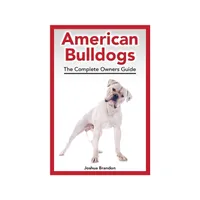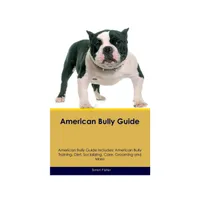American Bulldog vs American Bully: What’s the difference?
The American Bulldog and American Bully might sound similar but they’re two different breeds
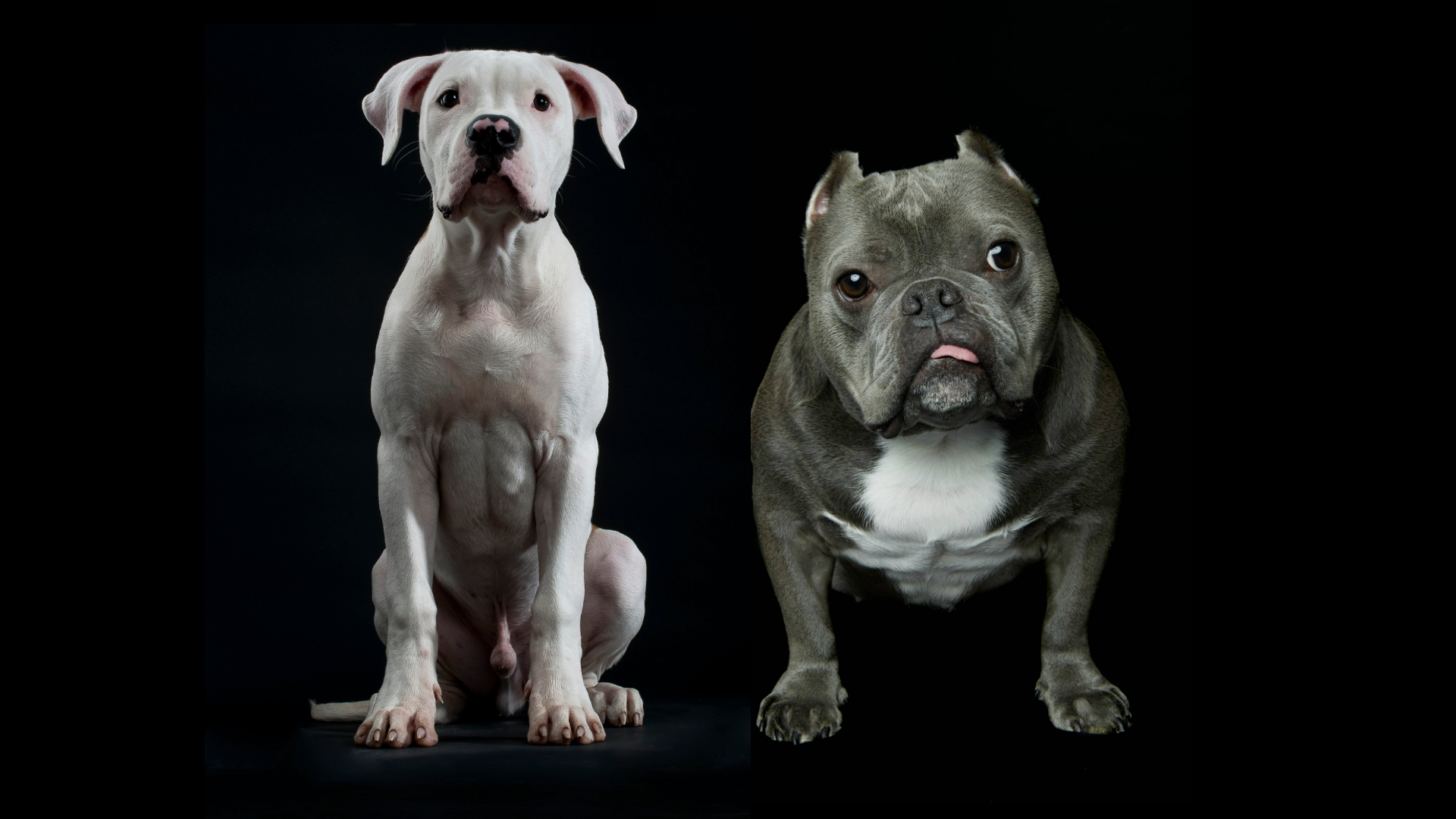
Let’s compare the American Bulldog vs American Bully. Their names may sound similar, but American Bulldogs and American Bullies are different breeds with different appearances, traits, and temperaments.
As a veterinary surgeon with 14 years of experience working with small animals, I see a variety of dog breeds in the clinic daily.
In this article, I'll share facts about both breeds, including whether they make good pets, and outline the main differences between them so you can decide whether they're the best choice for you or your family.
Breed history: American Bulldog vs American Bully
The American Bully is a strong, stocky, bull-type breed that originated in the United States in the 1980s. Initially intended to be a smaller version of the American Pitbull, making it more suitable for families, the breed combines various Bulldog and Bull Terrier breeds.
Just like the American Bulldog, American Bullies have a prominent snout, rather than being a brachycephalic breed. They’re also very muscular, even more so than the American Bulldog.
One type of American Bully, the XL Bully, is slightly taller and narrower. This breed is associated with several attacks and is a banned or restricted breed in some areas, including the UK and some American states.
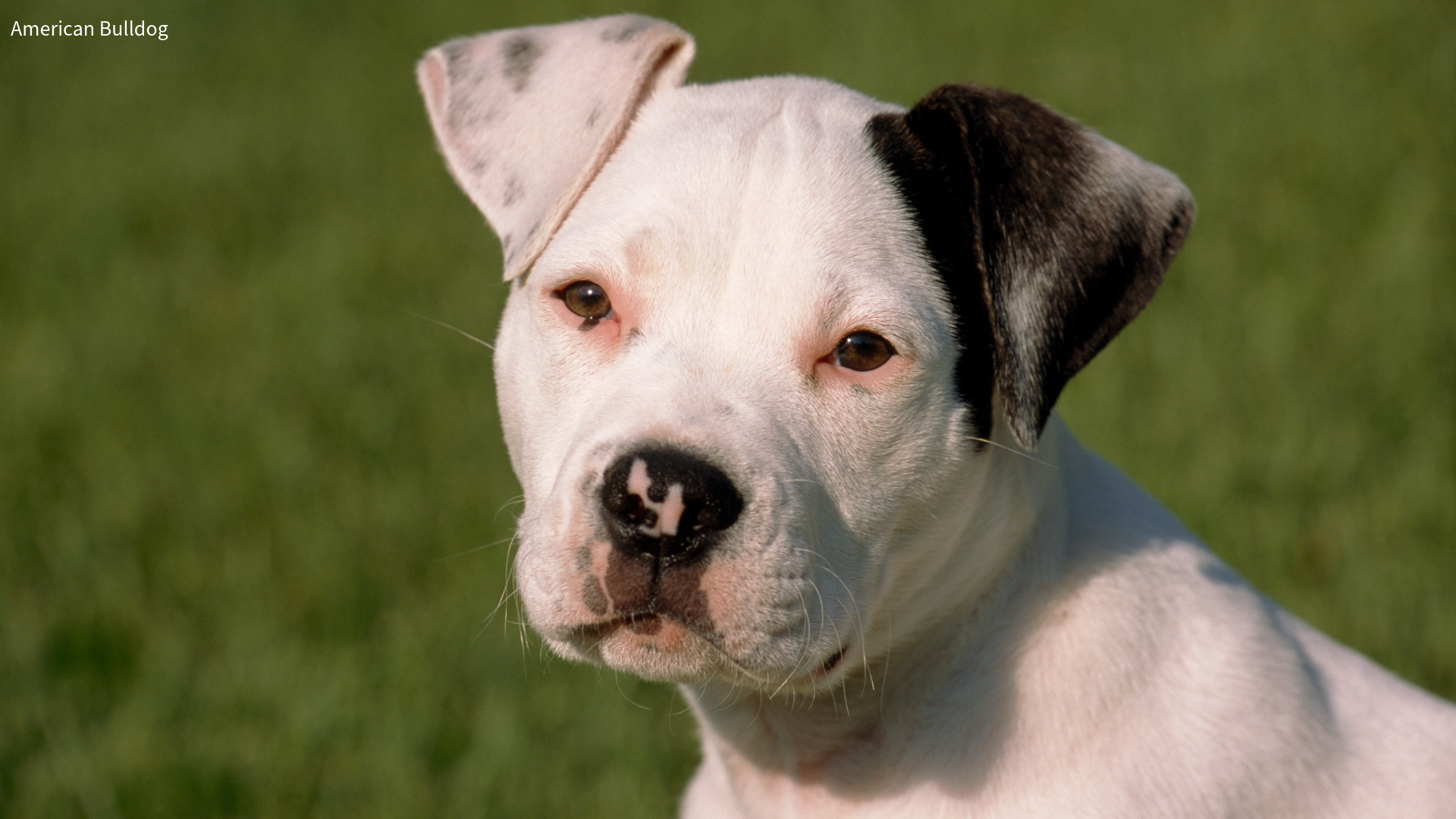
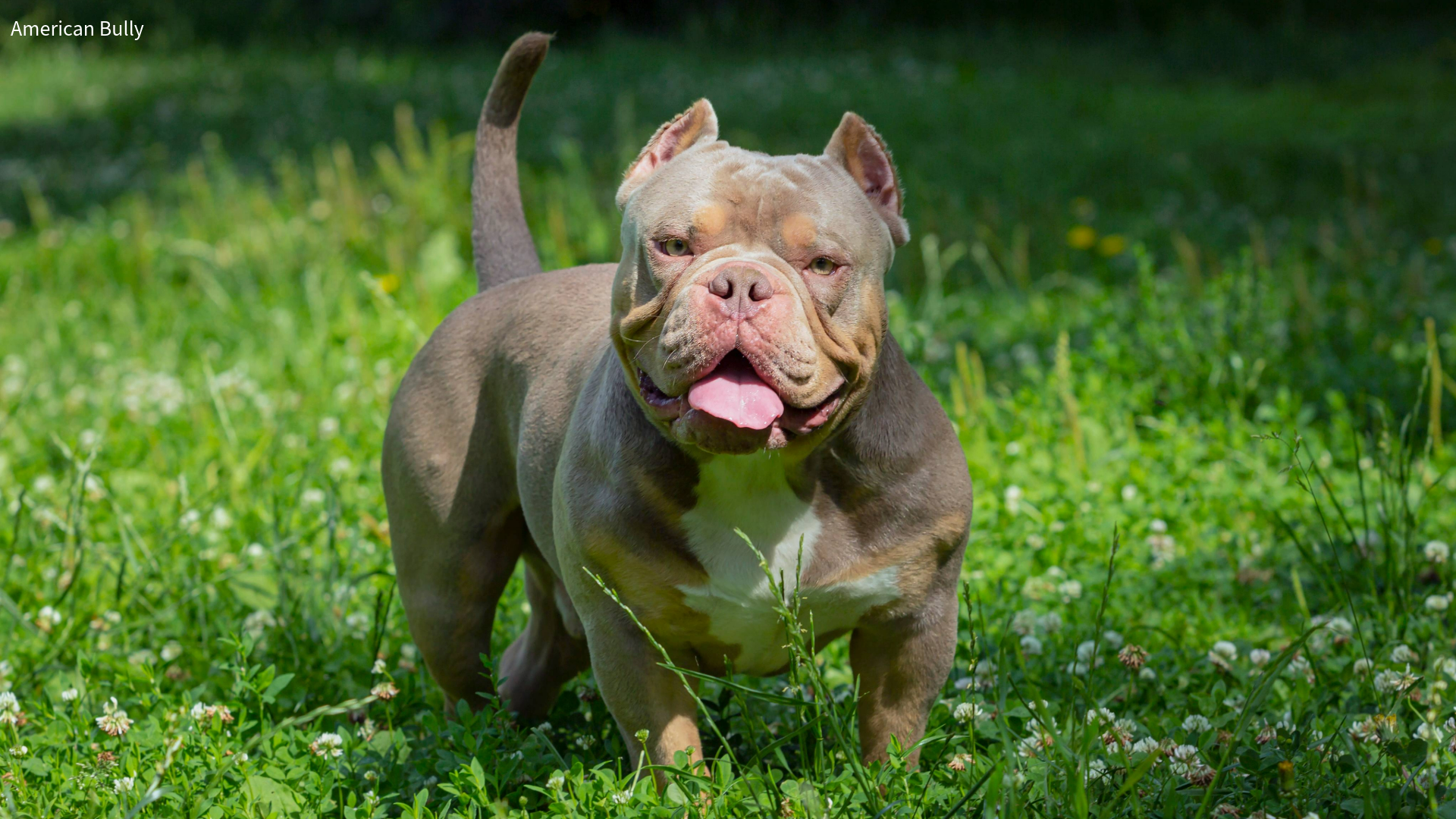
On the other hand, the American Bulldog is a large, working dog breed that descended from the Old English Bulldog. Unlike many other bulldogs, they usually have quite a prominent muzzle rather than a squashed snout (referred to as brachycephalic).
Get the best advice, tips and top tech for your beloved Pets
American Bulldogs are known for their size and strong, muscular appearance, but they're generally friendly and laid-back dogs. The breed originated from English Bulldogs who went to America with immigrants and were put to work on farms and ranches – their strength, agility, and endurance made them well-suited for farm tasks. They were also used as guard dogs due to their protective and loyal nature.
Size: American Bulldog vs American Bully
Although both have a boxy-shaped head and strong, muscular appearance, the American Bulldog is taller. The American Bully tends to have a shorter, wider stance. American Bullies are usually between 13–20 inches tall and weigh between 40–90 pounds.
XL bullies tend to be taller and heavier and are banned or restricted in some areas. American Bulldogs are usually between 20–25 inches tall and weigh between 60–100 pounds. With both breeds, females tend to be shorter and lighter than males.
Appearance: American Bulldog vs American Bully
The American Bulldog may have looser skin, particularly around the face, with more wrinkles (like their bulldog ancestors). The American Bully's skin is tauter due to their large muscles. Both breeds have short, smooth fur.
American Bulldogs are usually predominantly white, with tan, brown, or brindle patches. On the other hand, American Bullies are more commonly black or fawn. Both breeds have color variations including brindle, grey, tan, and red. The American Bully may have a colored mask or points (ears).
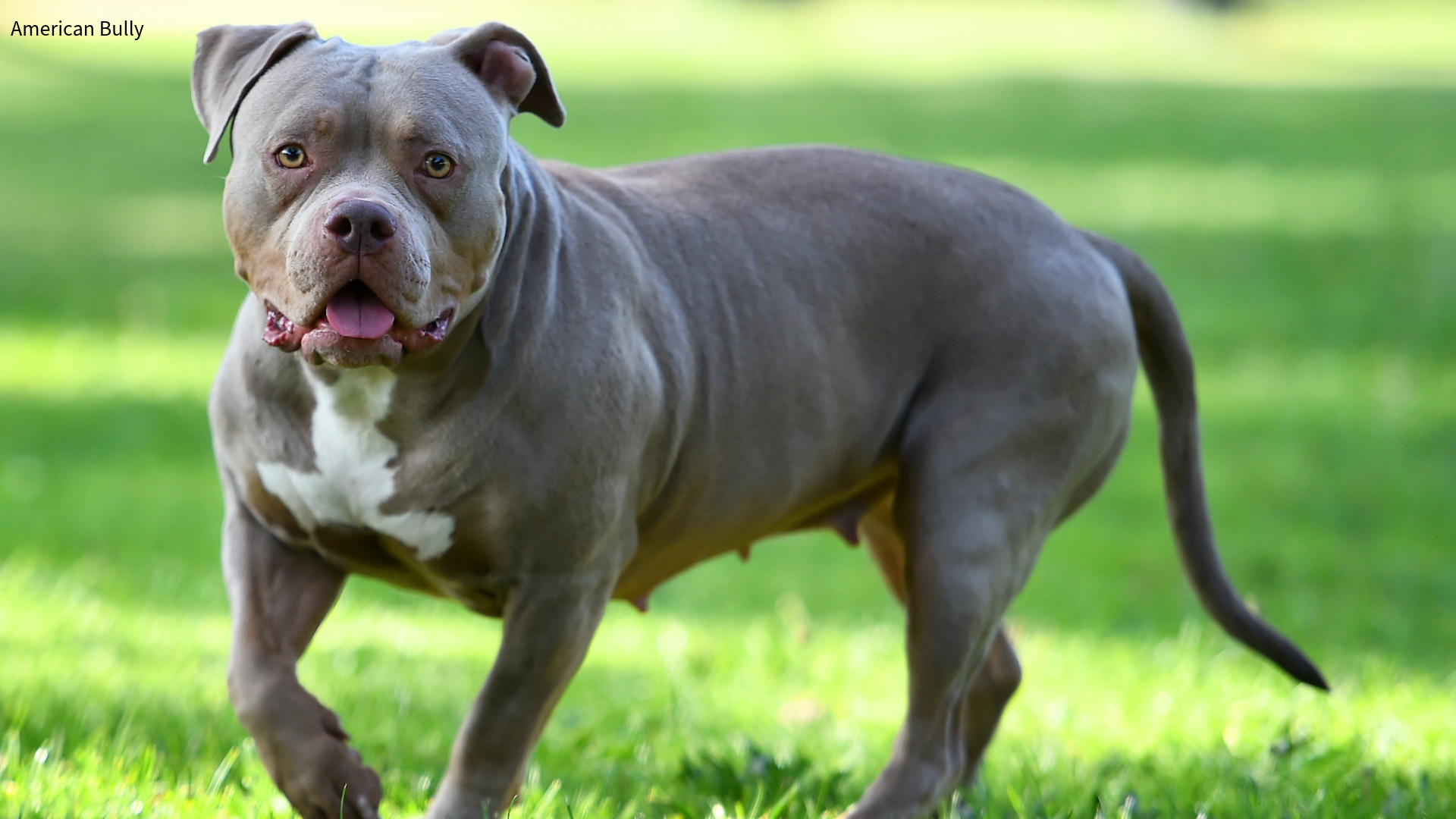
Intelligence and trainability: American Bulldog vs American Bully
Both breeds are strong, large dogs, meaning training is really important. American Bulldogs are moderately easy to train, while American Bullies can be a little more challenging.
However, perseverance and consistency combined with using a reward that really motivates them (perhaps a tasty treat!) can make training more successful.
Exercise needs: American Bulldog vs American Bully
American Bullies and American Bulldogs are generally laid back and can be couch potatoes. However, to prevent weight gain and avoid excitable or destructive behavior, it’s a good idea to give them regular exercise, at least half an hour a day, but more if possible. Check out these ways to workout with your pet for some inspiration!
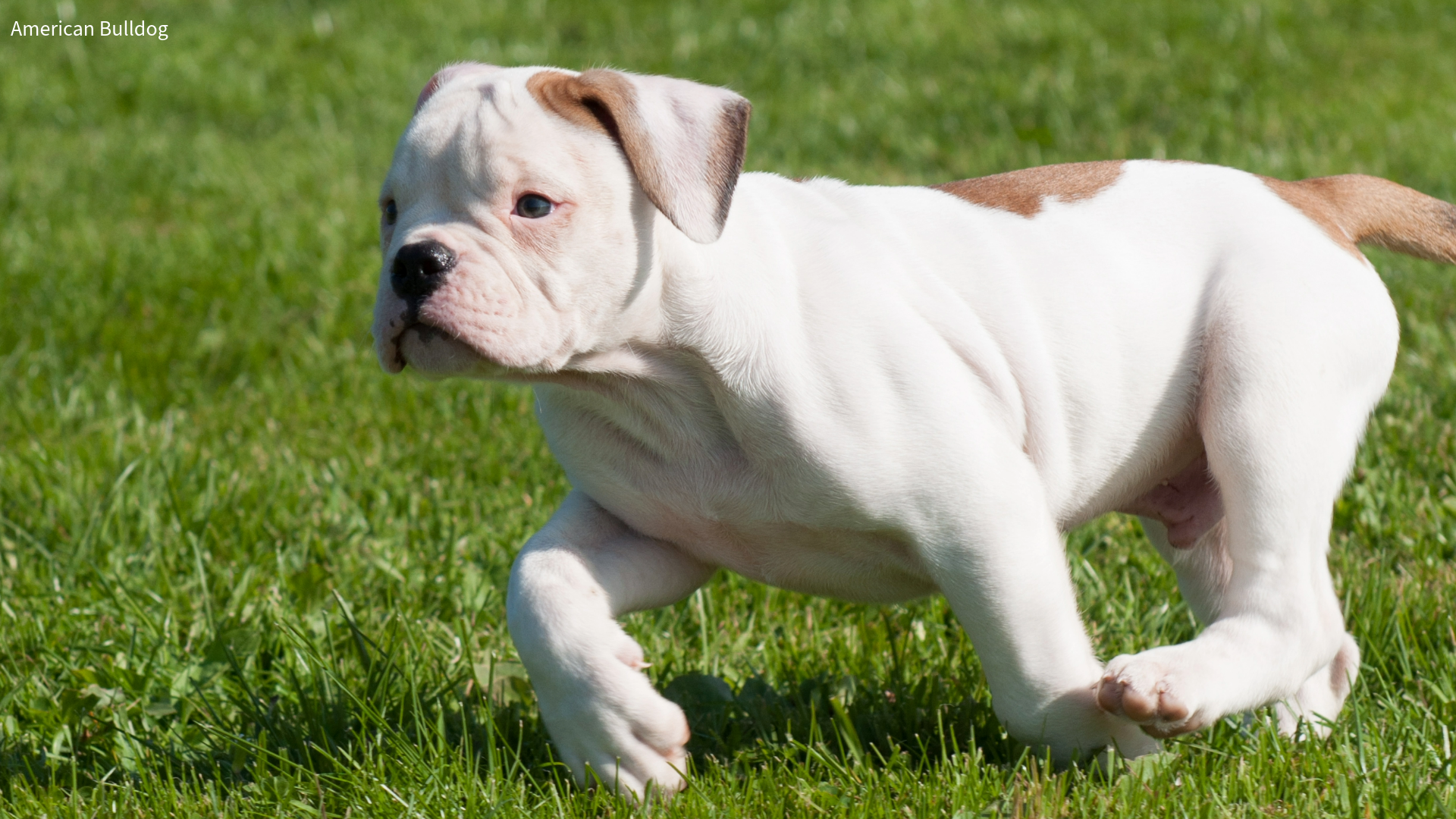
Grooming: American Bulldog vs American Bully
Neither American Bullies nor American Bulldogs tend to shed a lot of fur. Therefore, they don’t require much grooming.
However, they will need an occasional brush or wash, particularly if they get muddy or smelly!
Health considerations: American Bulldog vs American Bully
American Bulldogs are generally healthy dogs, but they are prone to elbow and hip dysplasia. These conditions can cause dogs pain throughout their lives and make them prone to developing arthritis at a younger age. Therefore, if you are considering adopting an American Bulldog, it's a good idea to check whether the parents have been screened for these conditions.
As a relatively young breed, it’s hard to say whether the American Bully is prone to any health problems specific to its genetics. However, due to their heritage and size, it’s worth monitoring them for signs of hip or elbow dysplasia and asking the breeder about any health problems in the parents before taking on an American Bully puppy.
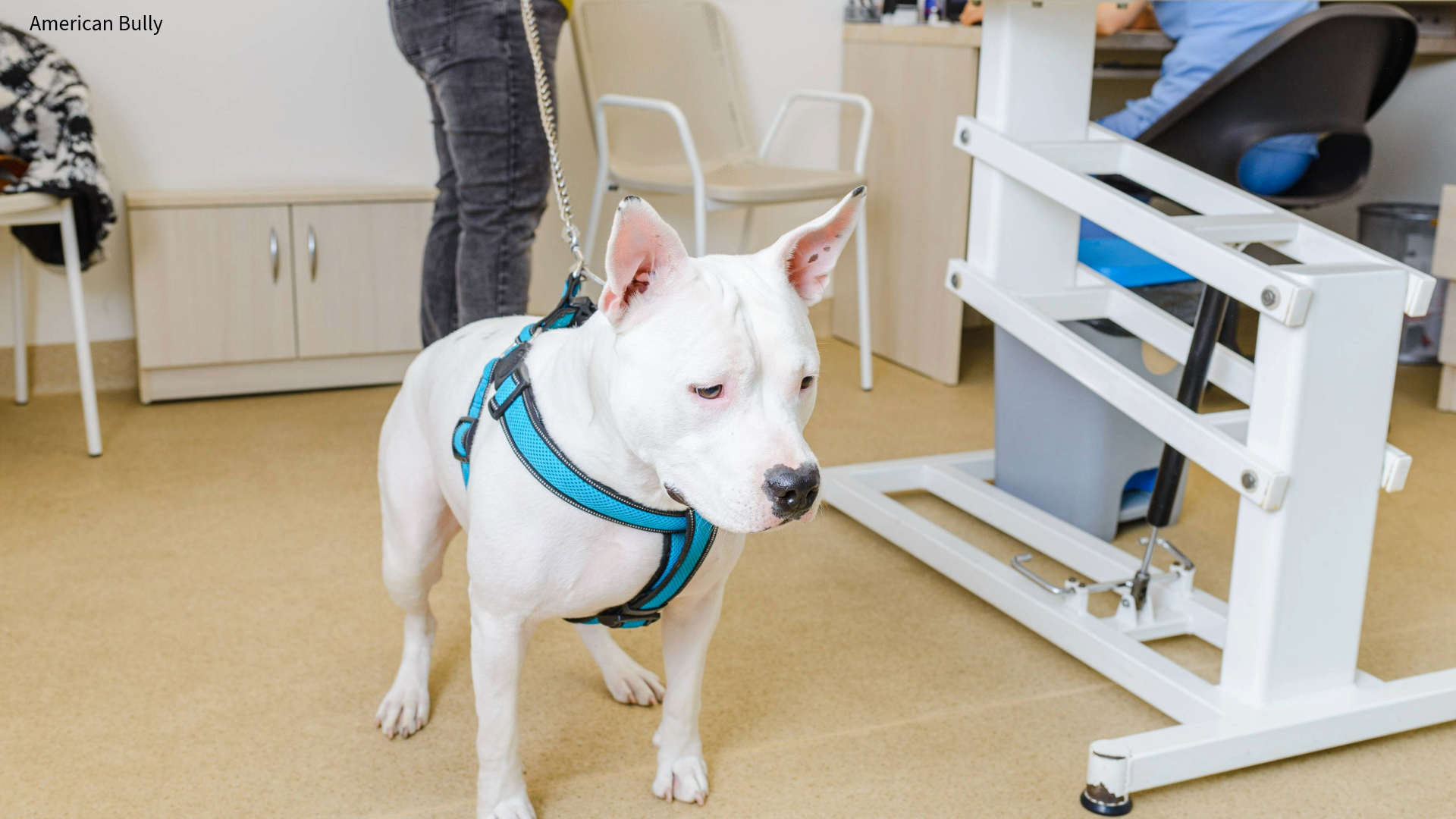
Owner suitability: American Bulldog vs American Bully
Both breeds are often friendly, laid-back dogs with an appetite for exercise and play, but they are just as content lounging on the couch! They’re loyal and protective and relatively good with children.
Due to their size and strength, training is essential. Although neither breed is particularly aggressive, any dog can develop aggressive behavior in response to their environment and experiences.
Therefore, with such potential to cause damage, it’s essential to supervise your dog closely, particularly around children or babies. The XL Bullies have been associated with several attacks and are banned in some areas, so it’s best to find out the laws where you live before adopting one.
Frequently asked questions
Is an American Bulldog the same as an American Bully?
No, the American Bulldog and American Bully are two separate dog breeds.
Are American Bulldogs good with children?
American Bulldogs are generally good with children, but because they’re large, strong, and like any dog, can be unpredictable, it’s important to supervise them.
Are American Bullies good family pets?
American Bullies often have a lovely nature and can thrive in the right home. However, XL Bullies (a large type of American Bully) have been associated with several attacks and are restricted or banned in some areas.
Are American Bullies illegal?
XL Bullies are a large type of American Bully and are banned or restricted in some areas, including some US states and the UK.
American Bullies and American Bulldogs sound similar, but they’re not the same breed! With both, you’ll get a strong and muscular dog, and they're usually friendly, laid back, and gentle.
However, as with any dog of their size, it's really important to train them well and supervise them around children. Before taking home an American Bully, make sure you know whether any local XL Bully restrictions will apply.
American Bulldogs: The Complete Owners Guide | Amazon
If you're keen to learn more about the American Bulldog, this book will teach you everything you need to know.
Read next: American Bully vs Staffordshire Bull Terrier or facts about American Bulldogs

Hannah graduated from the Royal Veterinary College in 2011 and began work straight away at a busy mixed practice. Initially, she treated all species, but focused on small animals from 2014. She has a passion for soft tissue surgery, ultrasound, and canine and feline dentistry, having completed additional training in these areas.
Edited by Megan Milstead.
This page was last updated in May 2025 by Hannah Godfrey BVetMed MRCVS.
Dr Hannah Godfrey is a small animal vet who graduated from the Royal Veterinary College in 2011 and began work straight away at a busy mixed practice. Initially, she treated all species, but focussed on small animals from 2014. She has a passion for soft tissue surgery, ultrasound, and canine and feline dentistry, having completed additional training in these areas.
